Barber Vintage Motorsports Museum: An Interview with George Barber
Thirty years in the making
On October 11-13 this year at the annual 2024 Barber Vintage Festival, the world-leading Barber Vintage Motorsports Museum outside Birmingham, Alabama, will celebrate the 30th anniversary of its foundation in 1994. It marks the third decade of what its founder George W. Barber describes as “just having fun”!
Courteous and correct, yet clearly fired by an inner passion for doing whatever in life he chooses to accomplish to the best of his ability, 84-year old George W. Barber is the man we all dream of becoming. The Alabama businessman from America’s Deep South has made a success out of everything he’s done in life. His father George H. Barber founded the Barber Pure Milk Co. family business in 1921, then purchased dozens of small independent dairies in the 1940s-’60s in making the renamed Barber’s Dairy company Alabama’s largest milk producer, while also helping establish U.S. standards for milk pasteurisation. George W. Barber took over running the business on his father’s death in 1970, then eventually sold it in 1997 to Dean Foods of Dallas, Texas before Walmart began threatening its viability. Having then branched out into real estate, he’s since played a key role in Birmingham, Alabama’s resurgence as the automotive Detroit of the South, as well as one of the principal Medical cities in the USA. He’s also driven development of the massive Barber Marina on Alabama’s Gulf Shores – but best of all he’s created the Barber Vintage Motorsports Museum, housing what is unarguably the world’s finest collection of motorcycles, set alongside its own daunting but scenic 17-turn 2.38-mile race track in 880 acres of land.
Despite his eagerness to meet and talk with fellow bike enthusiasts who flock to see his collection, George Barber is a private person, so it’s rare for him to be persuaded to recount in detail the story of the Museum’s foundation. But here, in his own words, is how all this came about.
“[The museum] all began with cars – or, strictly speaking, milk trucks!” explains George. “We had a truck rebuild facility for restoring old milk trucks to new. But we were beginning to wind that down, because we had such old 1950s trucks we couldn’t find the parts for them anymore. So Dave Hooper, the man who was working there for me, suggested we should do a motorcycle or two, and in 1991 he restored a couple for me, one of which was a 1952 Victoria Bergmeister. This made me begin to see how a motorcycle is really a piece of mechanical art which wears its technology on the outside. Unlike cars, you can see the front suspension on one motorcycle and compare it to another, whereas with cars, all you can see is a beautiful paint job, and a set of hubcaps. Having always done all the work myself in preparing my own race cars, I began to fall in love with the mechanics of motorcycles, so in 1981 we started buying bikes to form the basis of a collection. I got up to about a hundred bikes quite soon, and I was really having a lot of fun doing it, especially meeting other collectors. So I thought that with a little bit of luck, I could put together the best motorcycle collection in the world, and have it right here in Birmingham, Alabama in a way that’d help my city, and I’d have a hell of a lot of fun doing it. So here it is – and I’m still having fun!”
But as George began assembling the collection, he inevitably needed a place to store the bikes. “To begin with I used a facility we had in downtown Birmingham. But we outgrew it pretty quickly, and needed to expand. I incorporated the museum in 1994 as a non-profit entity, so that’s the year it was officially born, and then we discovered the site where we are now, which was then owned by the City of Birmingham. But we ended up buying the property, so now I control it and I can do what I like here. It’s worked perfectly for us.”
The Barber Motorsports Park race track come about at the same time as the Museum was established. “Initially we planned just a small test track running through the woods,” says George. “Originally, I thought we should stop at that, and we could build it better as the need arose. But then I thought, “Well, that’s going to cost about ten times as much, so let’s do it right the first time.” So we did. We opened it in 2002 about a year before the Museum was completed. I think we’ve used the topography exceptionally well. It’s a racer’s track, with so many demanding blind apexes, and as a racer myself on a humble level I had so much fun doing it, too. I’d take a picture of a corner, and I’d send it to John Surtees, and Dan Gurney, and Carroll Shelby too, and I’d say, what do you think, gentlemen, and they’d come back and say, “Well, give it a little more angle, some more camber, open it up or tighten it up, whatever.” I’m often asked, ‘Who designed the track?’ A lot of people designed the track! I had so much fun doing that with those guys.”
The late John Surtees became a close friend of Barber’s – did this come from designing the circuit with him? “No, it was before that. We were looking at acquiring some MV Agustas, and of course, you’d look no further than John Surtees for that because he won seven World Championships with them. So I called him up one day and we had a nice chat, even though I was terrified to talk to the man – me speaking to John Surtees, my gosh! Anyway, we had a wonderful discussion and I finally bought a bike from him, and then several more over the years. He’d come and visit with us here, or meet us in Daytona, and I have some wonderful memories of John. He was like a ballet dancer on a bike. When you see Mikhail Baryshnikov do his thing, it’s – wow! Even if you don’t give a damn about ballet, when you see him dance it’s so immediately impressive. Same thing with John Surtees. When I first saw him push his bike off, and lean his butt onto it to bump-start it, then stand on the footrest and roll his leg over the seat as he accelerated away, just folded into the bike to be all of a part of it – it was magnificent. He didn’t have to go more than fifty feet before you knew he was a World Champion.”
The 230,000 sq-ft Barber Museum’s unique spiral layout with a central elevator is unique in the motorcycle world, and is often compared to the Guggenheim Museum in New York. Was that George’s inspiration for this design? “No, my inspiration was a parking lot in downtown Birmingham! You drive around in a circle to go up or down, and you can peel off and go to various floors on the way. So I thought, ‘Why don’t I do it a little bit smaller, made for people not cars, and they can peel off and go to the various floors they want to visit.’ I also love the idea of it being staggered so that when you sit here, you can look into three different floor levels, and wonder how to get there, and what awaits you. So it’s not like so many other museums, where you walk in the front door and you’ve seen everything – you don’t need to take another step.”
“Another thing that’s wrong with many museums is that they have the bikes just lined up in rows side by side, and you can’t see them properly – they’re just a bunch of dead motorcycles, set all in a line. I think we’ve specifically addressed that with our layout. We’ve also tried to group bikes from different manufacturers with a common thread, like your Bimota Tesi next to some 888 Ducati Superbikes with the same motor. The only real pollination we have is the display of Yamaha racebikes we’ve now got in our extension – so you can see the entire line of Yamaha racing motorcycles from Day One all the way to the end. But I didn’t want to have all our Harleys or Moto Guzzis or whatever all together, because the Harley guy would go to look only at Harleys, and not see anything else. I want him to see the Ducati next to the Harley, next to the Guzzi, and so on – and to be able to compare different kinds of bikes with each other.”
The Barber Museum extension opened in 2017 and provided over 50% more display area, which allowed George to finally display the extensive collection of dirt bikes he’d been building up in his cellars. But even with the extension, does the Barber Museum still have other bikes undisplayed? “Yes, we probably have around a thousand bikes on show at any one time, with another five hundred in storage. But we keep adding to the collection as and when something we think we ought to have becomes available. We’ve still got a few bikes in mind that we’d like to buy, but I won’t say what those are, because when you do the price triples!”
Visitors to the Barber Museum are often astonished to find themselves talking to George Barber himself about their mutual passion. Does George visit the Museum often, given this is only a small part of his overall total business? “Yes, I love to be here,” he smiles. “I come after work most days, in the late afternoon around 4pm. I spend as much time as I can here, and I love to meet visitors from all over the world and talk to them. You can’t miss the opportunity to talk to such people. The Museum has become a magnet for those who would never have come to Alabama otherwise. Europeans go to Florida, or to California, and a few of them might go to Texas and New York. But Alabama? It’s amazing to me that just in passing, they’ll come and shake your hand or pat you on the back and say, “Thank you, I enjoyed this so much.” I’m gratified they’d take the time to do so, because I’ve had even more fun creating it than they’ve had in coming!”
But visiting here most days after work must mean that George often finds himself all alone with his huge family of motorcycles. That must be a slightly eerie, but also very rewarding feeling. “Yes, that’s so true – you’ve exactly got it! The most fun thing about having this collection is when everybody leaves the Museum, and it’s early in the evening, and nobody’s here, you walk by some of these motorcycles – and I swear they talk to you, they absolutely do. They draw you to them. Particularly some of the bikes that have been ridden by World champions, or people I’ve met and got to know like yourself. Each bike has such a fantastic history, so as you walk on by it says, ‘Come here, I want to tell you something.’ It’s just unbelievable, the feelings that you get being around these machines.”
“Here’s an example – this is a Vostok four, one of two 1960s 500cc Russian Grand Prix bikes we have here. I acquired this one really early on, when we were still in the middle of the Cold War. I was talking on the phone to the guy in Moscow I was negotiating to buy it from, and I told him, “Yes, I’d like to have the bike.” So then he said, “Listen, we have some MiG-25 Foxbats for sale, too – this was the supersonic Russian interceptor aircraft that back then was the fastest military aircraft yet to enter service! And I thought, ‘Here I am talking on a phone to this man in the middle of Moscow about buying a vintage racing motorcycle, so how in the hell can we be talking about also purchasing warplanes as a kind of spinoff from that?! It was quite an unreal experience – but every time I see the Vostok I think of that!”
Asking George Barber which of the 1,500 bikes he owns is his favorite is a bit like asking someone to name their favourite child – but still, what is it? “No question – it would have to be the MV Agustas that John Surtees rode, because of my relationship with him, and remembering him as a dear, dear man. And these motorcycles talk to you about his accomplishments on them, big time! So I’ve got to say those are my favorites, because they were ridden by a man who was a World Champion both on and off the track. But the late Giancarlo Morbidelli was also a close friend, and we have some of his motorcycles here. They talk to me also, though not quite as much as the Surtees bikes. We have a Morbidelli display that’s a smaller version of what Giancarlo had in Pesaro at his own Museum there. He was a fabulous man, too.”
George Barber presents the Barber Motorsports Park racetrack located alongside his Museum very differently to visitors than other track owners. There's a tram which runs around the track to let people change position conveniently. Did this come from going to races himself? “Yes, indeed. Why do I need to walk a mile to get from one corner to another and watch the race from various places? I don’t want a spectator grandstand where you’re standing on eighteen inches of concrete or steel all day – I want you to get on the tram and watch the race from this corner, then get back again to watch from six or seven different places, not just one.” This is also strategically intelligent, since it helps make Barber a family friendly circuit. “Exactly so,” says George. “Some other race courses around here are pretty well known for drunken behaviour and general craziness. For the first couple of races I staged here, I had a lot of security, and those people who thought this was going to be the same as other race tracks – they learnt quickly that I won’t tolerate it. You can have your beer and your whiskey, and you can have fun here, but if you get even a little bit out of line, you’re escorted out of the park. I do not want Mom to round the corner with her kids to see a bunch of half-naked drunks. But if you treat people like persons whose presence you value, they will respond in kind. We empty the trash cans frequently, and pick up cigarette butts – that’s one thing I know how to do very well! I think once you start with something that’s clean, people see that and do things right.”
The Barber circuit is also famous for the many jokey sculptures displayed. How did these come about? “Oh gosh, you’ve got to have some fun! We’ve got the huge ants, and one of them has a helmeted rider in her claws, taking him to her nest with a Coca-Cola bottle to lunch on him. We’ve got Charlotte the spider, and the turn next to her is called Charlotte’s Web, and so on. All this came about because when we started building the track, the environmentalists jumped right onto us, and they really were very vicious and obnoxious with their lies, and their personal attacks on everybody working here. Their constant criticism made everyone feel really down, and totally depressed because things were taking months that should have taken days. So I said to myself, ‘I’ve got to do something to lift everyone and get some laughs.’ So I did the spider, and I did the ants, and I did some dragonflies, and then I brought the press out here and showed them all this. And I said, “Look, the environmentalists were right, look at what’s happened, we’ve taken these insects and domesticated them instead of leaving them to exist in nature – how disgraceful!” So we got some laughs in the media, and the environmentalists kind of backed off after that, so we got the thing built, and here we are. An official study a while ago said we brought a billion and a half dollars in income to the state of Alabama and the City of Birmingham. I think we’re well over two billion now, and we have a lot of people at work here making it possible for visitors to come to the park, and enjoy what we have to offer.”
However, achieving this must have entailed a huge investment in terms of money as well as George Barber’s personal time in creating the Museum and Motorsports Park. Would he care to put a figure on how much money he’s spent so far in creating all this? “Sorry, but no – I really don’t like to. And in not doing so, people generally put a much larger figure on it than what it really is. So I just keep my mouth shut and let them guess if they want to, knowing that the estimates they’ll end up with are way out of line.” Still, enthusiasts must be glad that George decided to do this instead of building another apartment block or boat harbor – but what will happen to the Barber Museum in the future after he’s inevitably no longer with us?
“Well, it’s a 501C3 Foundation, so a not-for-profit entity, and it’s fully funded – so this thing can go on and on until people get tired of motorcycles, and don’t want to come here anymore,” he says. ”OK, you say that’s unlikely – but things are changing radically, and it’s concerning to me that so many youngsters today aren’t really interested in even getting a driver’s licence. They’re using their computers, and their little digital whatever, and they’ve lost interest in mechanical items. Look at our visitors and our crew out here, we’re all older rather than younger. I don’t see youngsters getting really interested in bikes, and for a number of reasons. One – and it’s more important to me than anything – you can’t work on a motorcycle anymore today. As a kid I would take a bike’s engine apart and I’d polish the ports and make sure the carburetors were set right, and check the points and the plugs, all so I could outrun my neighbor. But now, you’ve got to have a computer and access to an ECU to even think about tuning the things. I’ve talked to manufacturers and told them, “Make a simple bike with a carb and a distributor, that a guy can tinker with,” So until we get them interested in doing that, I don’t know, Alan – I really don’t. Soon we’ll go all-electric, and probably driverless – so who’s going to be enthusiastic about doing anything with a car that damn well drives itself?!”
It’s in the spirit of that desire to promote future conventional motorcycle design that in 2022 George Barber established the new 11,000sq-ft Barber Advanced Design Center/BADC, a high-tech workspace for industrial design exploration located on the top floor of the Barber Museum to facilitate future-facing state-of-the-art design, as part of his intent that the Museum should be more than just a showcase for motorcycle and automotive history, that’s also set to look into the future, too
"The intention of the new Center is to encourage and explore design via the latest computer-aided resources, as well as old school clay modelling, with the capacity to turn concepts into product reality,” he says. “We need people to think beyond what's happening today, and see how we can improve on it. The BADC was created to open the door to such thinking.” Inside the BADC are workstations, 3-D scanners and 3-D printers that have dramatically streamlined design processes – and these tools not only speed up design work, they also allow highly accurate reverse engineering of vintage components which assist in restoration projects! The BADC is open by appointment for students and designers from around the world, with restricted public access, and one of its first projects was to permit noted designer Pierre Terblanche, a Birmingham, Alabama resident, to create an EVO version of his legendary Ducati Supermono design dating back to 1992.
How does George W. Barber feel about the Barber Vintage Motorsports Museum 30 years on after he started collecting bikes? Is there anything that he’d have liked to have done differently in creating it? “I’d like to have done it faster, that’s all! But other than that, no. It’s a dream come true – it really is. The Guinness Book of World Records says it’s the World’s largest motorcycle museum. I’m delighted to be a part of creating that.”
Become a Motorcycle.com insider. Get the latest motorcycle news first by subscribing to our newsletter here.
A man needing no introduction, Alan Cathcart has ridden motorcycles since age 14, but first raced cars before swapping to bikes in 1973. During his 25-year racing career he’s won or been near the top in countless international races, riding some of the most revered motorcycles in history. In addition to his racing resume, Alan’s frequently requested by many leading motorcycle manufacturers to evaluate and comment on their significant new models before launch, and his detailed feature articles have been published across the globe. Alan was the only journalist permitted by all major factories in Japan and Europe to test ride their works Grand Prix and World Superbike machines from 1983 to 2008 (MotoGP) and 1988 to 2015 (World Superbike). Winner of the Guild of Motoring Writers ‘Pierre Dreyfus Award’ twice as Journalist of the Year covering both cars and bikes, Alan is also a six-time winner of the Guild’s ‘Rootes Gold Cup’ in recognition of outstanding achievement in the world of Motorsport. Finally, he’s also won the Guild’s Aston Martin Trophy in 2002 for outstanding achievement in International Journalism. Born in Wales, married to Stella, and father to three children (2 sons, 1 daughter), Alan lives in southern England half an hour north of Chichester, the venue for the annual Goodwood Festival of Speed and Goodwood Revival events. He enjoys classic cars and bikes, travel, films, country rock music, wine - and good food.
More by Alan Cathcart





























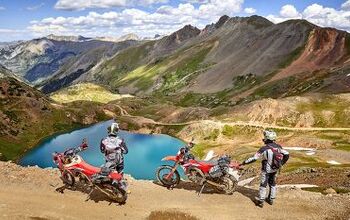


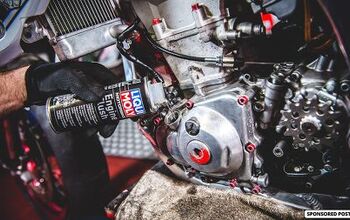
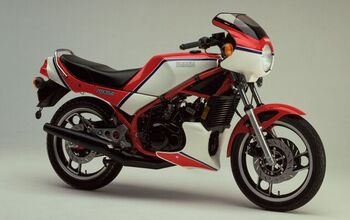




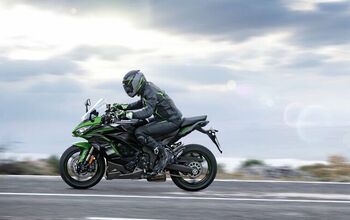

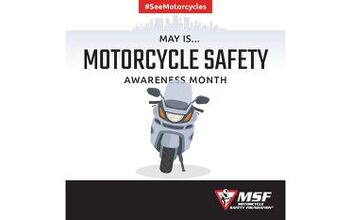
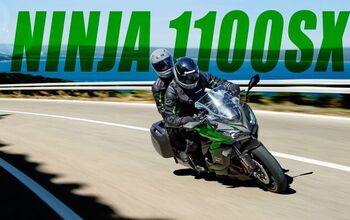
Comments
Join the conversation
Lots of folks from up my way make their way to Barber via the Blue Ridge Parkway. Many of the good people along that route are really hurting. If you can spare some cash, find a vetted relief agency and donate to them.
I finally got there for the first time this year. Excellent but I'm sorry I didn't see the spider!